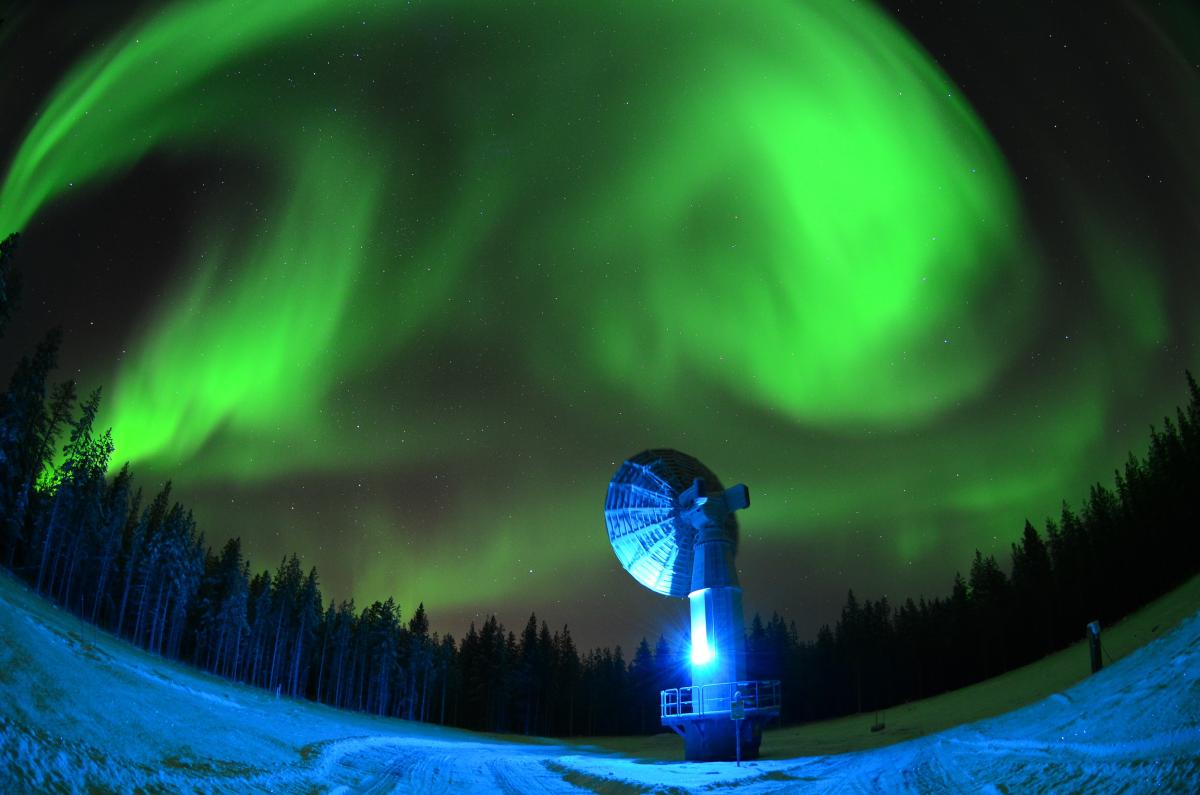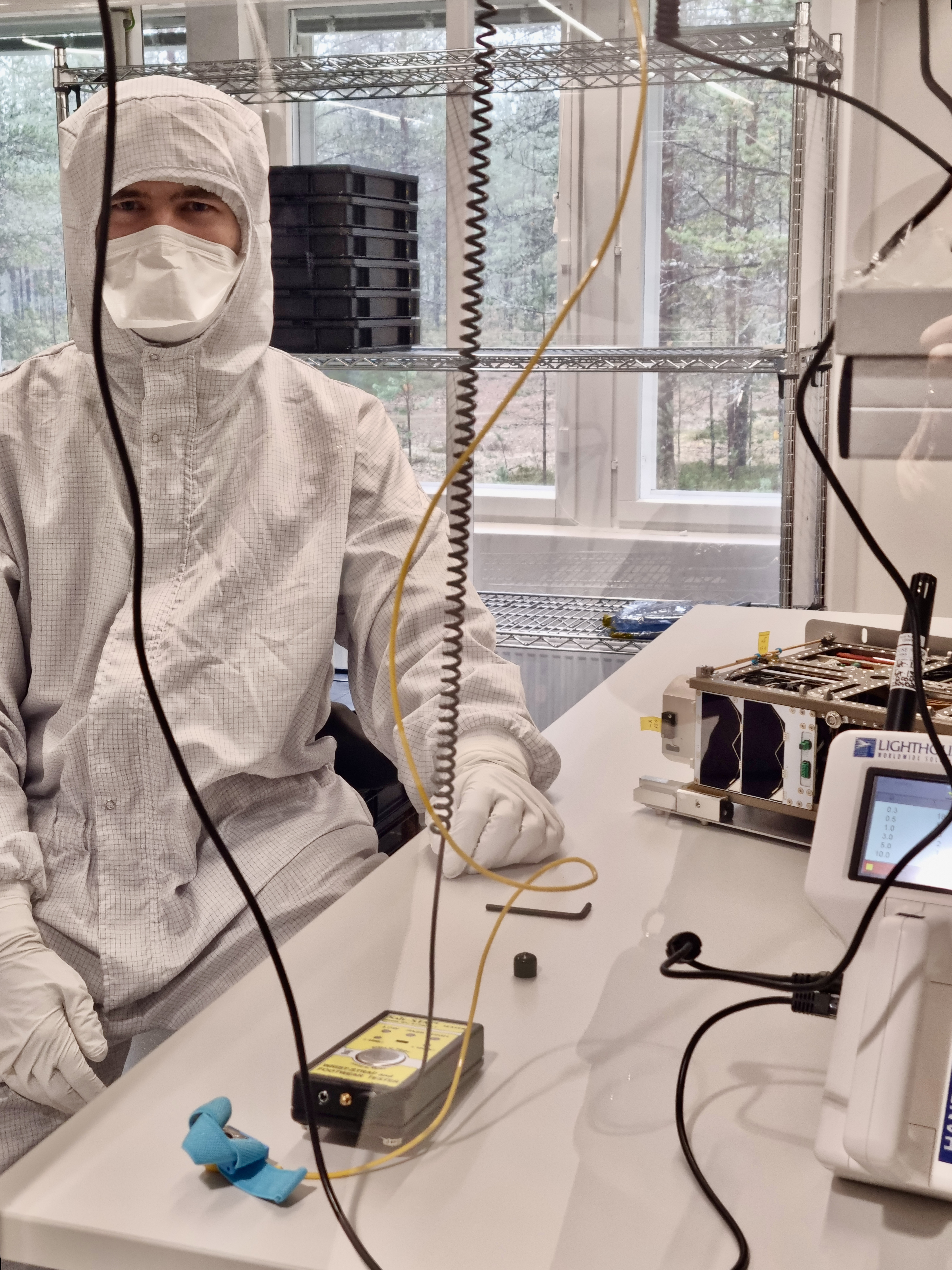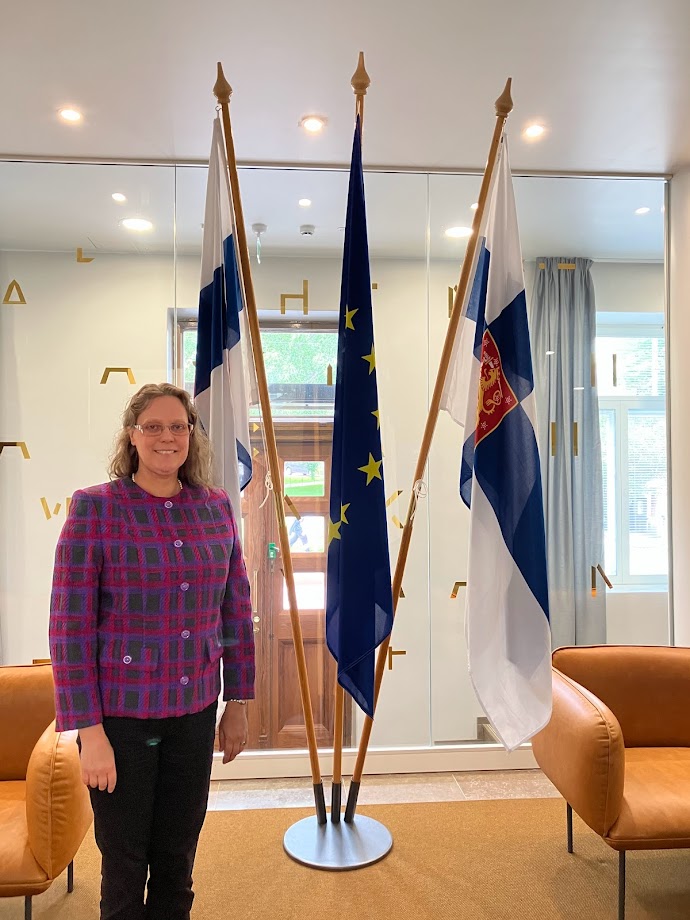The observation operations of the Sodankylä Geophysical Observatory reach new heights: SGO's 110th anniversary culminated in the presentation of Lapland's first own satellite

On September 1, 2023, representatives of the Finnish space community and citizens interested in space arrived at Sodankylä's "Tähtelä" to celebrate the 110-year journey of the Sodankylä Geophysical Observatory (SGO). The observatory's story continues ambitiously with the upcoming launch of Lapland's first own satellite and the inauguration of a new clean room facility.
In 1913, the first buildings of the Sodankylä Geophysical Observatory were inaugurated at Sodankylä's Tähtelä, which were to write Finnish space history and contribute to Finland's transition to the satellite era.
The initiative to establish the observatory originally sprang from the international research community, which recognized the need for an observation center in the unique location of Sodankylä, which is situated within the auroral zone. Due to the Earth's magnetic field structure, space disturbances are directed to Sodankylä, granting a particularly clear visibility into space. Over the years, this international task has remained an integral part of the Sodankylä Geophysical Observatory's mission, even as its activities diversified with the progress of space activities, up until reaching the new space era – the commercialization of the space industry.
The Sodankylä Observatory in the early space age
Established by the Finnish Academy of Science and Letters, the "Sodankylä Observatory" launched its observation activities by focusing on the study of the Earth's magnetic field. In its early decades, SGO's primary mission was to observe space phenomena in the spirit of advancing scientific research. A significant expansion of the SGO's measurement activities occurred in the 1950s, when seismic monitoring was added as an observation target.
The next milestone was achieved in 1966 with the preparations for the Sodankylä ground station. The capability to receive satellite signals marked SGO's entry into the space age. Eija Tanskanen, current director of SGO, comments on the observatory's role in the early satellite era: "SGO played a significant role in the initiation of European satellite operations by receiving signals from the first European satellite, Azur. This facilitated the development of the necessary technology and contributed to Finland's transition to the space age."
As space activities became generally more prevalent, SGO soon reached another milestone: in the 1970s, the observatory initiated operational activities, which introduced the distribution of observation data to various societal levels in order to promote their functionality and development.
SGO was also took centre stage when Finland built its first instrument to be sent into space: "In 1988, the space magnetometer launched on a NASA sounding rocket was built at SGO. It was during this time that space-qualified soldering technology was established in SGO's technical laboratory," reminisces Esa Turunen, space physicist and former director of the observatory.
Regarding the observatory's organization, the most significant change occurred in 1997, when SGO transitioned from the Finnish Academy of Science and Letters to becoming a separate national institution within the University of Oulu. Today, SGO is riding the wave of the "new space" era by participating in business collaboration projects and additionally plans to expand its observation capabilities into space with its own small satellite.
"Contemporary society is intricately intertwined with observation activities"
What kind of observation activities does SGO engage in today? Eija Tanskanen summarizes that "SGO's central measurement activities focus on monitoring the atmosphere and near-space, magnetic measurements and the monitoring of radio interferences." Atmospheric observations have always constituted a central component of SGO's mission. SGO provides data to various national levels on a daily basis and among other delivers thunderstorm observations to airlines worldwide. Through magnetic field observations, measurement activities are present in citizens' everyday lives. In addition to these, Tanskanen emphasizes that space plays a larger role in our daily lives than we may realize: "Contemporary society is intricately intertwined with observation activities. Measurement activities ensure the functionality of technology susceptible to radio interference, such as computers and smart devices. Even though measurement activities hold a significant position in society, their criticality is often recognized only when disruptions occur."
Measurement activities also play a critical role from security policy perspective. For example, the observatory's data is being transferred to the United Nations, which evaluates earthquake probabilities. In the context of radio interference monitoring, Sodankylä's northern location has once again proven favorable. "SGO's location offers internationally unique forecasting opportunities for disturbances in space-dependent operations," notes Eija Tanskanen.
Observational work requires international cooperation
Space observation activities necessitate a broad international network of collaboration. Currently, SGO has hundreds of active partners and participates in over twenty collaborative projects.
SGO engages in particularly close cooperation with other Arctic observatories, which is exemplified by the Arctic Space Hub led by SGO. The network brings together observatories in the European Arctic region, such as the Swedish Institute of Space Physics (IRF) and the University Center in Svalbard (UNIS). In collaboration with Germany, SGO is launching its first NATO project aimed at expanding the meteorite radar network and providing NATO with more precise space situational data. In addition to Finland and Sweden, Germany and Norway are also participating in this project.
Alongside observational cooperation, SGO is increasingly engaged in business collaboration as the space industry commercializes. For example, the goal of the E2S project was to promote the activities of a Finnish company specializing in aurora cameras. Eija Tanskanen views the development of the 'new space' era positively, stating that "the growth in the space industry accelerated by the new space economy has enabled the participation in even larger space projects."
LappiSat1 satellite launches Lapland's space endeavors to new heights
SGO is not only transitioning to the new space era but is also establishing itself as a satellite operator. With the LappiSat1 project, the University of Oulu is launching its first satellite into orbit. Onboard the small satellite are aurora cameras that capture three-dimensional aurora images from an altitude of 500 kilometers. "While every project and research endeavor at SGO is a significant effort, the LappiSat1 satellite ranks as one of the highlights of my leadership," remarked Tanskanen. Esa Turunen commented on the new clean room facility established in connection with the LappiSat1 project: "The inauguration of the clean room laboratory at the LappiSat1 Space Technology Center is the culmination of SGO's long-term work. All that remains is the installation of instruments and, of course, the satellite's actual launch in the near future."
With what vision does Tanskanen intend to lead the 110-year-old observatory into the future? "My vision is to recognize the value of existing observation capabilities and space expertise in Finland more broadly and to harness the potential of existing capabilities to tackle global problems and increase societal preparedness."

The new clean room laboratory of the Sodankylä Space Technology Center was inaugurated on September 1, 2023.

Eija Tanskanen, Director of the Sodankylä Geophysical Observatory: "SGO's location provides globally unique forecasting opportunities for disturbances in space-dependent operations.
Further information:
Eija Tanskanen, director of the SGO: eija.tanskanen(@)oulu.fi, tel. 029-448 0813
Esa Turunen, director emeritus of the SGO: esa.turunen(@)oulu.fi




